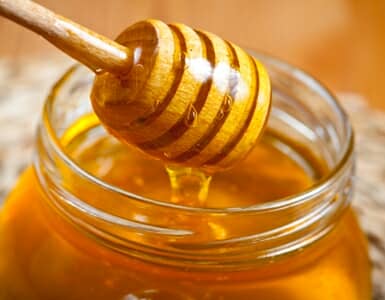
Use this natural healer to treat burns and other ailments
For the longest time it was taught that wounds heal better if they’re exposed to the air once they’ve been cleaned and the bleeding has stopped. New research shows differently. The latest finding supports the idea that keeping a wound moist and covered allows it to heal more quickly with less chance of infection. Apparently, the local blood vessels regenerate faster and the number of cells known to cause inflammation also decrease in number if wounds are not allowed to dry out. The research indicates that a wound should be kept moist for at least five days.
Companies selling antibiotic ointments and creams may try to capitalize on these findings. Keep in mind, however, that there is a potential downside. While these ointments may help keep the wound moist, they also increase swelling in the tissue and can cause a localized allergic reaction—canceling out any positive effects.
Researchers have found that one of the best and most effective methods of keeping a wound safely moist is by applying Vaseline. While it’s true that Vaseline is a good alternative there is another solution that I have been telling my readers about for years that may be even better—honey.
Honey is one of many natural substances that have been used for hundreds of years in other countries to treat burns and a variety of other ailments. And, despite these hundreds of years of success and research studies to support its use, since it can’t be patented and used as a drug, you’d be hard-pressed to find honey in any ambulance, fire truck, emergency room, hospital, or doctor’s office here in the US. So if you don’t have a honey jar, after reading this report, I certainly hope you add one to your kitchen pantry, medicine cabinet, first-aid kit, et cetera.
Use Honey to Treat Burns
Burns are one of the most difficult problems to treat, because this type of wound provides the perfect breeding and feeding ground for many organisms. As such, burn wounds can easily become infected, and the infection often spreads rapidly into the bloodstream, which can kill the victim. That’s why, if you have a burn wound, it’s important to act fast and do all you can to protect yourself.
Numerous studies have shown honey’s amazing bacteria-fighting powers when used in dressings to treat burns. One study evaluated the effects of using unheated raw, local honey on nine different pathogenic organisms found in burn wounds. When cultured, none of the organisms was able to survive a 30-percent concentration of the honey.
In another, somewhat similar study, doctors compared the effects of raw, unheated honey to numerous antibiotics on 28 different strains of pathogenic, multi–drug resistant bacteria associated with burns. Only three of the strains were inhibited at all by any of the 11 antibiotics used in the study; every single one of the 28 strains was inhibited by a 25-percent concentration of honey. Plain, simple, raw honey worked.
...and Many Other Ailments
Honey has to be one of the most underutilized therapeutic tools for treating burns, as well as ulcers, and other wounds. Research shows it has been used successfully to treat all types of wounds, including:
- Amputations
- Bedsores
- Leg ulcers (diabetic foot and leg ulcers, varicose ulcers, leprosy ulcers, sickle cell ulcers, et cetera.)
- Malignant ulcers
- Fistulas
- Cracked nipples
- Surgical wounds
- Gunshot and trauma-induced wounds, including those to the skull and abdomen
- Cuts, abrasions, and puncture wounds
Why Honey Is So Effective and Easy to Use
There are a couple of things you need to know about the use of honey. Its antimicrobial activity is due to several factors. Honey is what’s called a super-saturated sugar solution. In chemistry terms, it has what is known as a very high osmolarity. When it comes into contact with microbes it “sucks” the water from their cells and destroys them. The same thing happens with sugar dressings on wounds. It draws the water from inside the bacteria cells and kills them through dehydration. Unlike sugar, however, honey has several other characteristics that are lethal to various microbes.
Honey is somewhat acidic. On the pH scale, with 0.0 being the most acidic, 7.0 being neutral, and 14.0 being the most alkaline, the pH of honey ranges from about 3.2 to 4.5. Honey’s acidic nature helps destroy certain microbes. Honey also has the unique ability to produce hydrogen peroxide (H2O2). As I’m sure you know, hydrogen peroxide can kill pathogens on contact. Honey doesn’t actually contain hydrogen peroxide but instead produces it through a chemical reaction when conditions are just right. First, the pH of the honey must rise to between 5.5 and 8.0. Second, a small amount of sodium (or salt) must be added to the mix. This is exactly what happens when honey comes into contact with human skin or a wound. The glucose or sugar molecule in honey starts to break down and produce hydrogen peroxide.
If you’ve ever tried to store hydrogen peroxide, you know how unstable it is and how easily it loses its effectiveness over time. Honey remains stable for long periods, however, and retains its ability to produce bacteria-killing hydrogen peroxide upon demand. Honey also contains dozens of other antioxidants, minerals, enzymes, amino acids, fats, and compounds that aren’t yet fully understood but which aid in the elimination of microbes and speed healing.
Best of all, honey is so easy to use. For deeper wounds and abscesses, honey is generally used to fill the cavity after it has been cleaned. On smaller wounds and on larger ones that have been filled with honey, a top dressing is applied. This is done using approximately 1 ounce of honey on a 4-inch square dressing pad. The pad is then applied directly to the wound. A second, dry dressing is placed on top of the first dressing and secured with adhesive tape.
Changing the dressing once daily is usually all that is required. If the wound initially produces a large amount of exudate (the fluid that can ooze out of wounds), then more frequent changes may be necessary. Once no exudate is being produced, the honey dressing may only need to be changed once every five days to a week.
Honey is inexpensive, readily available, and one of the best-tasting burn and wound remedies I know of. It’s foolish not to have a jar in your kitchen pantry and first-aid kit. The gauze dressing pads will probably cost you more than the honey. (Keep in mind that some of the best and least expensive dressing pads are panty liners and sanitary napkins. Many brands now have adhesive backing, which makes them even more convenient.) And, remember, your doctor probably won’t be familiar with any of this information, so I also recommend keeping it handy for future reference.


